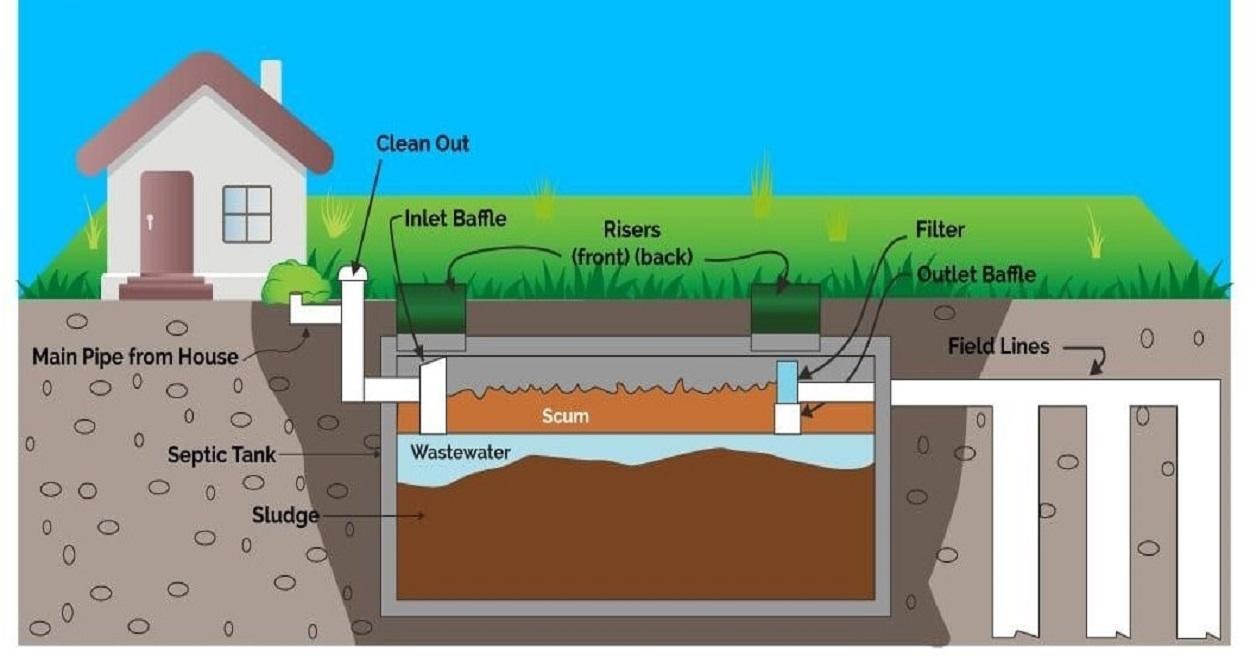The drip distribution system uses to transport the pre-cleaned wastewater to a soil treatment plant, where the wastewater supplies the plants with nutrients and water. Pre-treated wastewater regularly “drips” out of the pipe so that a small amount of wastewater can irrigate a large area of vegetation. Topsoil is a good environment because it maximizes wastewater treatment and minimizes the risk of untreated water flowing quickly through the soil. This system uses a pump that pumps wastewater from the septic tank to different plants.
How Does Drip Distribution Work?
The basic principle of the drip irrigation distribution system is the same as other soil treatment systems. That is filtration of waste and bacterial decomposition. The difference is that the drip irrigation system distributes sewage evenly over a large area. The drip distribution system consists of four main parts: pre-treatment equipment, septic tank pump, filter/purification equipment, and distribution system.
The pre-treatment equipment depends on the dripper and the manufacturer’s recommendations. Some drip distribution system requires advanced pre-treatment while others only use septic tanks. All systems can be connected without a good filter device. The pump tank stores water until the drip point is ready to hold a certain amount of wastewater. A high head pump is required to distribute the wastewater evenly. Pump selection and installation follow standard on-site processing system design practices.
The filter removes all particles that are larger than 100 micrometers in the wastewater. Some filters have an automatic cleaning system. Drainage capacity and total dynamic head are essential to design features to ensure that wastewater is directed through the drain.
Even with good filtration, pipe growth can lead to blockages. The discharge system eliminates growth and prevents clogging.
Types of Filters in Drip Distribution System
The most common types of filters used in the drip distribution system are sand, disc, and rotary filters. With the appropriate pre-treatment, all three filters are fully functional. Hence, designers and owners need to weigh the strengths and weaknesses of each type.
- Sand filters: These are similar to swimming pool filters and are inexpensive and easy to maintain. The disadvantage is that sand particles that get into the pump housing wear out the pump or leak out the filter and clog the transmitter.
- Disc filter: This filter of the drip distribution system was recently developed in Israel and uses serrated discs as the filter medium. They’re more expensive than sand filters but less of a nuisance. The medium produced offers flexibility in terms of resistance to dirt, and filter maintenance can be fully automated using pressure gauges and control panels.
- Rotary filter: There is a stainless-steel sieve to filter the wastewater. Dirty water is pressed into the sieve through the directed nozzle plate, creating a centrifugal effect and rotating dirt along the sieve wall in a large dirt container. Most are self-cleaning.
The distribution system includes components that transport the wastewater from the pump to the soil treatment area. This is the most complex part and has seen the most design changes in the last 20 years. The hose is connected to the pump at one end. Small openings or drains along its length allow sewage to drip onto the floor. The pipe diameter is usually 1/2 inch, and there is a transmitter on the wall of the pipe. The internal pressure is 15-20 pounds per square inch. The manifold of the drip irrigation system is connected to a return tank to wash the solids in the drip irrigation pipe.
Problems
Most problems arise with pipes that contain dissolved or suspended solids or with root-clogged pipes or radiators. This leads to an uneven distribution of the wastewater. Every brand of the hose is unique, and hose suppliers approach problems differently.
The drip distribution system designer or operator should research the hose choice carefully before making a decision. Pressure equalization tubing is the easiest option because the flow rate will automatically increase if the transmitter starts to block. It is also designed for systems installed in non-horizontal locations, so no additional design requirements are required to ensure even distribution.
Maintenance and Operation of Drip Distribution System
All of the recommended routine operation and maintenance methods for on-site processing systems can be applied to intravenous distribution systems.
Maintenance should be annual (or ideally quarterly), and the entire system should be checked. First, check the pressure gauge for changes in pressure. This can lead to blockages and leaks. Second, you can find any obvious leaks when applying the sewage by walking around the application area. Third, the purge valve should be checked to ensure that the device is not worn out or is not being used properly. If the flush valve fails, dirt particles can be sucked into the discharge device and cause difficult problems. To measure the actual displacement, you need to check the flow meter. This tells the owner whether the amount of wastewater is above the design level. Eventually, you may need to flush the pipes and filters.
The daily cost of running drip irrigation is based on running a small submersible pump, and the average home pays less than $ 1 a month. Maintenance costs range from $ 200 to $ 500 per year and include regular septic tank evacuation, electricity, and maintenance visits.


